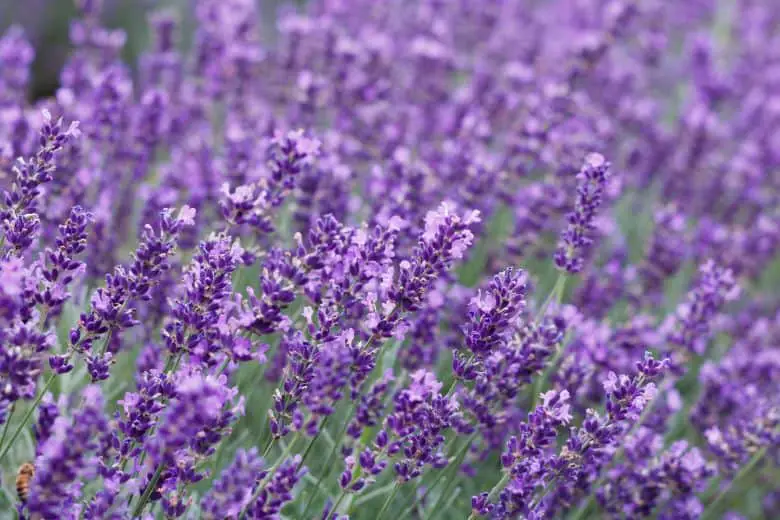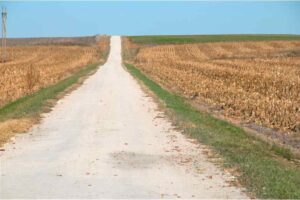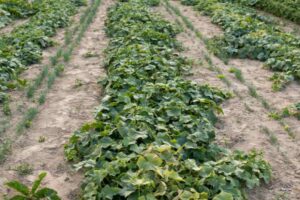
While lavender is often associated with Provence, France, it is quite possible to grow this beautiful herb in the climate of Texas. Lavender thrives in hot, sunny, and dry conditions – making many parts of the Lone Star State perfect for cultivating this fragrant plant.
With the right planting location, soil preparation, and care techniques, anyone can enjoy fresh lavender blooms in their Texas garden. Follow these steps for growing gorgeous lavender in Texas.
Choose the Right Spot or Find the Perfect Place
The first key to successful lavender growth is choosing an ideal planting location. Lavender needs full sun – at least 6 hours of direct sunlight per day.
Position your lavender plants in the hottest, sunniest spot in your yard. Southern or western exposures work best. Lavender also needs excellent drainage.
Check that your planting soil drains water well and does not get soggy after rain. Poor drainage can cause root rot. Choose raised beds or mound soil if needed to improve drainage.
Choose Varieties Wisely for Texas
Select lavender varieties are known to thrive in heat and withstand dry conditions. Focus on cultivars bred for plant hardiness zones 8-10.
Top heat-loving variety choices include:
- ‘Munstead’
- ‘Hidcote’
- ‘Provence’
- ‘Grosso’
- Spanish lavender (exceptionally hardy and resistant to heat/humidity)
# Stay away from more delicate varieties meant for cooler climates, as they may not flower as prolifically in hot Texas summers.
# Consider trialing 2-3 different varieties in your garden to see which performs best given your unique microclimate factors like temperature patterns and soil composition. The variety that flowers most reliably is the one to expand.
# Spanish lavender earns top marks for its fortitude in facing the rigors of the Lone Star state climate. But testing varieties allows you to discover your personal winning choice.
Preparing the Soil for Lavender in Texas
Prepare the soil in the spring, a few weeks before planting, by mixing in 2-4 inches of organic matter like compost, aged manure, or peat moss.
This enriches the soil and improves moisture retention. Test your soil pH and aim for slightly alkaline soil between pH 7-8. Lime can be added if the soil is too acidic.
Lavender thrives in nutrient-poor soil, so do not over-fertilize which can cause lush foliage growth at the expense of flowers.
Planting Lavender in Texas
Now you are all done planting lavender in your place. Here is the step-by-step process:
Planting and Spacing Your Lavender
Step 1: Wait for the right time. In early spring, when nighttime lows are reliably above 50°F, lavender is ready to go in the ground.
Step 2: Select plants. Choose bare root lavender transplants or potted plants in 4-6 inch containers.
Step 3: Map it out. Use stakes and string to lay out your garden design, spacing individual plants 18-24 inches apart in staggered rows or clustered groups.
Step 4: Dig the holes. For each plant, use a trowel or garden spade to dig a hole twice as wide as the root ball but only as deep.
Step 5: Remove from container. Gently slide plants from their pots or containers without damaging the roots.
Step 6: Plant. Place each lavender in the center of a hole. Handle the roots carefully.
Step 7: Refill holes. Fill back in with the removed soil, packing it down firmly as you go.
Step 8: Water well. Give each plant a thorough watering to settle the soil around the roots.
Step 9: Add extras. Consider planting a few extra plants in case any don’t thrive at first.
Step 10: Mulch. Top dress the whole planting area with 2-3 inches of organic mulch like shredded bark.
Step 11: Admire your handiwork! Your lavender patch is now ready to thrive.
Care Through the Growing Season
- Water new plantings regularly for the first 4-6 weeks to allow roots to develop.
- After plants are established, water only occasionally if rains are lacking during the heat of summer. Mature lavender is very drought tolerant.
In early spring
- Apply a thin layer of compost or all-purpose organic fertilizer high in phosphorus around plants.
- Prune off any flower stems that bloomed in the prior season to encourage new growth.
- Mulch annually with 2-3 inches of organic material like shredded bark to retain moisture and suppress weeds.
- Snip off any dead or diseased growth in winter as needed using clean pruners.
- Control powdery mildew by ensuring good airflow between plants and avoiding overcrowding in the patch. Space plants 18-24 inches apart.
- Once established after the first season, lavender is low maintenance! Just water sparingly and deadhead blooms.
Harvesting Heavenly Blooms
Lavender will start flowering in late spring to early summer depending on the variety and continues through late summer or early fall.
For maximum fragrance and potency, harvest stems just before or as blooms fully open. Cut stems with at least 4-6 inches of stem remaining.
Tie small bouquets with string and hang them upside-down in a warm, dry spot to dry for 2-3 weeks before using. Remove brown blooms and enjoy the aromatic blooms in sachets, potpourri, or culinary uses.
Fresh or dried blooms can also be used in crafts and floral arrangements.
Winter Protection and Division
Provide winter protection as needed depending on your hardiness zone. Cut back by 1/3 after the bloom period. Mulch heavily and/or cover plants with burlap or evergreen boughs during sustained freezing temps.
Lavender is hardy in zones 8-10 without protection but may appreciate insulation from harsh freezes. In very cold winters, consider moving potted plants to a sheltered spot like a sunny porch.
Division every 3-5 years in early spring when blooming decreases keeps plants vigorous.
FAQs About the How to Grow Lavender in Texas
What type of soil is best for growing lavender in Texas?
Answer: Lavender prefers a well-drained, slightly alkaline soil with a pH between 6.5 and 8.0. Adding compost or aged manure to the soil will help to improve drainage and increase nutrient levels.
How much sunlight does lavender need in Texas?
Answer: Lavender prefers full sun, so it should be planted in an area that receives at least 6 to 8 hours of direct sunlight each day.
Conclusion
With a little TLC tailored to your unique Texas microclimate, you can enjoy the heavenly fragrance and cheery blooms of lavender throughout the Lone Star state summers. Proper site selection, soil preparation, irrigation, and pruning techniques are the keys to cultivating gorgeous, flowering lavender bushes to last for many seasons in your Texas garden. Soon you’ll be cutting aromatic bouquets of homegrown lavender to enjoy!





